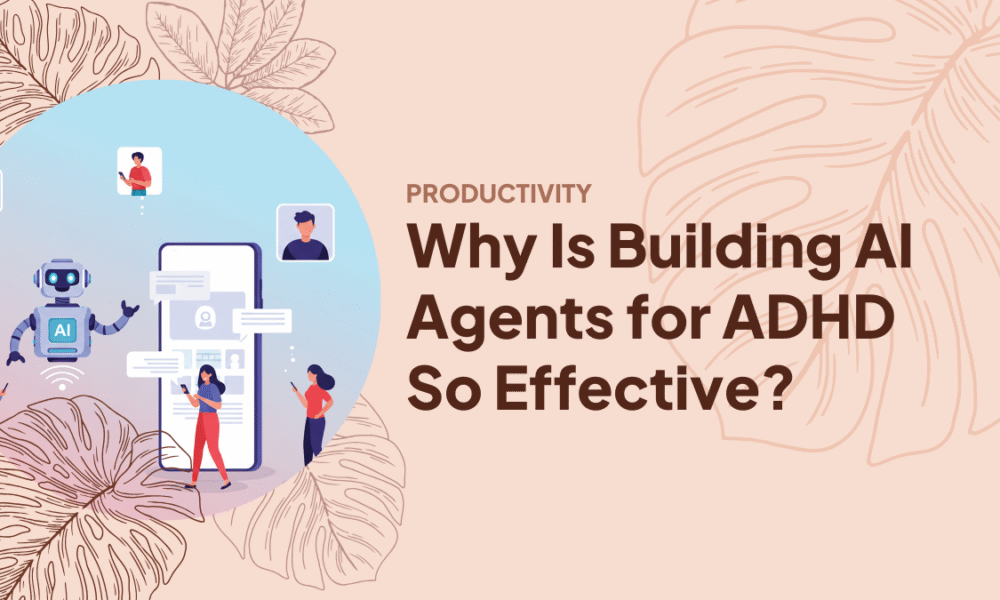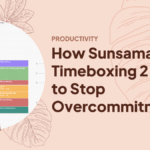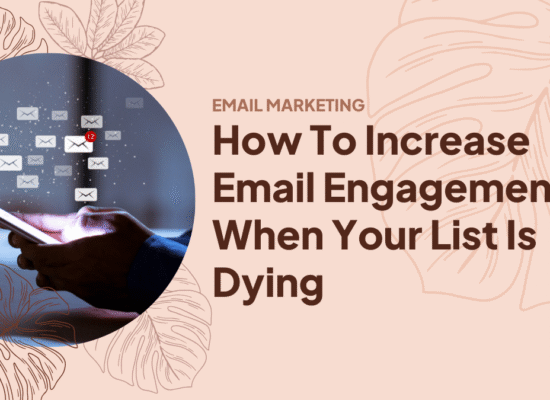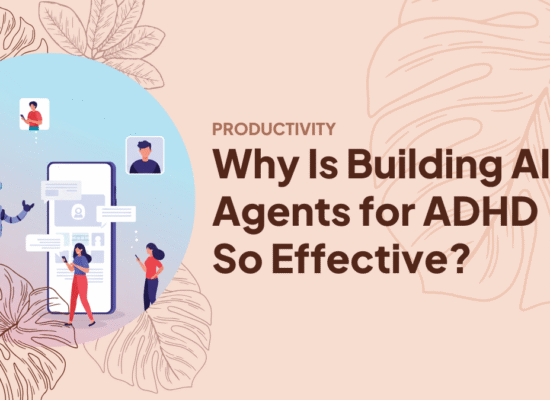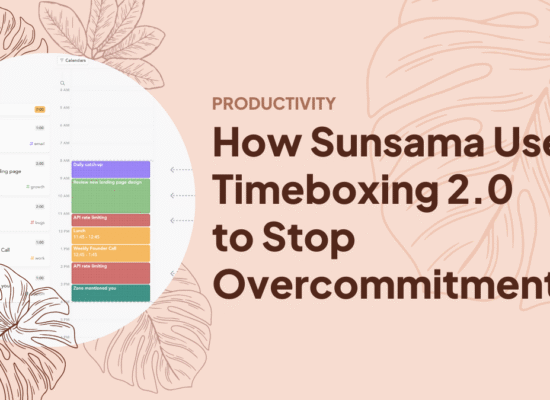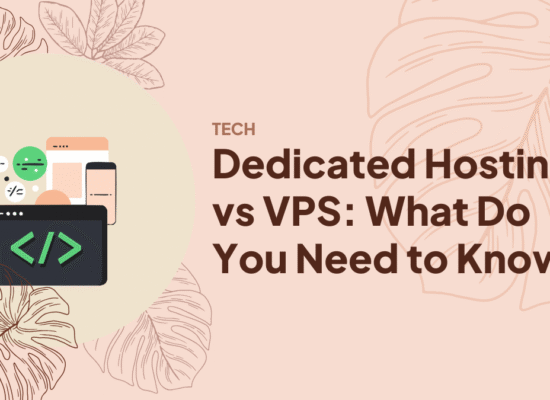Table of Contents
- What Makes AI Different From Every Other Productivity Tool?
- How AI Helps With Common ADHD Challenges?
- Why AI Agents Cost Less Than You Think?
- What This Looks Like in Real Life?
- Why Personalization Matters?
- Building Your AI Support System
- What We’re Learning About Neurodiversity and Technology
- The Human Element Remains Central
- Moving Forward
- Start Building Your AI Support System
- AI agents adapt to ADHD cognitive patterns instead of forcing rigid structures, reducing the 22 lost productivity days per year that untreated ADHD typically causes
- Unlike traditional tools, AI provides external working memory, personalized task sequencing, and real-time attention regulation at a fraction of the cost of human assistants
- Building AI agents for neurodivergent support represents a fundamental shift from making people fit systems to making systems fit different brains
Static systems fail dynamic brains. Building AI agents that understand ADHD finally changes this.
You’ve tried the planners, apps, and organizational systems. They worked for a week, maybe two. Then life happened, priorities shifted, and that carefully built productivity system became another source of guilt on your phone.
The problem was never your commitment or intelligence.
Most productivity tools expect you to:
- Remember to check them constantly
- Maintain them manually
- Follow rigid structures even when your brain needs flexibility
For people with ADHD, that’s like using tools designed for someone else’s brain entirely.
The numbers tell the story. Adults with ADHD lose an average of 22 days of productivity per year when untreated. This contributes to annual costs between $143 billion and $266 billion across the economy.
But something has shifted in how technology can support different brains.
What Makes AI Different From Every Other Productivity Tool?
Traditional tools demand that you adapt to them:
- Calendar apps need manual input
- Task managers need constant updating
- Project tools expect you to remember they exist
AI agents flip this completely.
They work as external memory that adapts to your patterns. Unlike static systems that fall apart when you deviate from them, AI adapts to your changing needs. The system learns from your behavior and adjusts to your rhythms in real time.
Think about what your brain does well:
- Creative problem-solving
- Connecting disparate ideas
- Hyperfocus on engaging challenges
- Pattern recognition
Now think about what trips you up:
- Remembering to start tasks
- Estimating time accurately
- Maintaining attention on boring work
- Switching between tasks smoothly
AI agents handle the second list so you can leverage the first.

How AI Helps With Common ADHD Challenges?
Executive function means the brain skills that help us plan, focus, remember things, and manage tasks. For people with ADHD, these skills take more mental energy.
For entrepreneurs with ADHD especially, juggling multiple priorities creates extra demands.
AI agents help with specific challenges:
Working Memory Support
Your working memory holds information temporarily. When it’s limited, you:
- Lose track of tasks mid-execution
- Forget why you opened that browser tab
- Struggle to hold multiple project details in mind
AI assistants store this information for you. They remember what you were working on, why it mattered, and what comes next. You don’t need to hold everything in your head anymore.
Task Initiation and Sequencing
Starting tasks, especially boring ones, is hard with ADHD. AI agents help by:
- Breaking projects into smaller chunks
- Suggesting what to do first based on your energy
- Giving you one specific next action instead of an overwhelming list
The AI figures out what comes first, second, and third so you don’t have to.
Time Blindness Help
Many people with ADHD struggle to estimate how long tasks take. AI calendar tools:
- Automatically schedule focused work blocks
- Provide realistic time estimates based on your history
- Send timely reminders that account for your transition time
The system learns you need 15 minutes to mentally shift between tasks, not just 2 minutes.
Attention Regulation
AI agents help you stay on track by:
- Gently redirecting when you’ve been off-topic too long
- Suggesting breaks before you’re exhausted
- Helping you return to interrupted tasks without losing context
They work as an external attention regulation system.
Why AI Agents Cost Less Than You Think?
Traditional virtual assistants who provide similar support cost $500 to $2,000 per month. That puts professional help out of reach for most people.
AI work assistants provide similar support at a fraction of the cost. Accommodations that used to require serious money are now accessible.
For businesses, the math is simple:
- Productivity gains from supported employees exceed the minimal AI investment
- Regaining even half of those 22 lost productivity days pays for itself
- Better outcomes for employees and the bottom line
But the value goes beyond just money.
What This Looks Like in Real Life?
AI agents work through conversational interfaces that feel natural. You talk to them like a colleague who knows your work style.
Example: “I need to finish the client proposal but I’m feeling overwhelmed.”
The AI responds by:
- Showing your current progress
- Breaking down remaining sections
- Suggesting the easiest piece to start with
- Scheduling focused time blocks that match your energy
It remembers you work best in 45-minute sprints with 15-minute breaks, not the standard 25-minute Pomodoro.
Throughout your day, it gives you realistic reminders. Not “Meeting in 5 minutes” when you need 20 minutes to prepare. Instead, “Time to wrap up and transition to your 2pm call” with enough buffer to arrive mentally present.
When you get distracted, the AI doesn’t judge. It helps you return to where you left off without wasting energy reconstructing your thought process.
Why Personalization Matters?
Generic productivity advice assumes everyone’s brain works the same:
- Wake up at 5am
- Do your hardest work first
- Batch similar tasks
- Use the two-minute rule
These strategies work great for some people and fail completely for others.
AI agents learn your specific patterns. They might discover:
- You’re most creative between 10pm and midnight
- Task-switching helps you maintain engagement
- Certain types of tasks trigger avoidance
- Other tasks trigger natural hyperfocus
The system adapts to your actual brain, not an idealized version.
Over time, personalization gets better. The AI spots patterns you might not see:
- Client calls drain your energy more than you realize
- You consistently underestimate design work by 40%
- You need recovery time after certain activities
This level of support used to require a dedicated human assistant who knew you deeply.

Building Your AI Support System
Starting with AI agents for ADHD support doesn’t require technical expertise or complex setup. The key is choosing tools that genuinely adapt rather than adding more rigid systems to your life.
Look for AI assistants with natural language interfaces. You should be able to communicate the way you actually think, not translate your thoughts into specific command structures.
Prioritize tools that integrate with your existing workflows. The AI should work within the apps you already use rather than requiring you to adopt entirely new platforms. Friction kills adoption, especially for ADHD brains.
Getting Started With Building AI Agents
Start with one specific challenge area rather than trying to overhaul everything simultaneously. If task initiation is your biggest struggle, focus on AI tools that excel at breaking down projects and suggesting next actions. If time blindness causes the most problems, prioritize intelligent calendar management.
Platforms like BLACKBOX AI make building AI agents accessible without requiring coding expertise. These tools let you create personalized agents that understand your specific ADHD work habits and adapt to your unique cognitive patterns.
Give the system time to learn your patterns. The adaptation happens through use, not through lengthy setup processes. The more you interact with the AI naturally, the better it becomes at providing relevant support.
What We’re Learning About Neurodiversity and Technology
The development of AI agents for ADHD reveals something important about how we’ve been thinking about productivity and workplace accommodation.
We’ve spent decades trying to help neurodiverse individuals adapt to systems designed for neurotypical processing. We’ve offered training, coaching, and strategies to make people fit existing structures better.
AI agents flip this entirely. They adapt systems to fit different cognitive styles.
This represents a fundamental shift in how we approach neurodiversity in professional environments. Instead of asking people to change how their brains work, we’re finally building tools that work with different brains.
The implications extend beyond ADHD. As AI becomes more sophisticated at recognizing and adapting to individual cognitive patterns, we’ll see similar support for other neurodivergent processing styles. Autism, dyslexia, anxiety disorders, and various other conditions that affect executive function could all benefit from similar adaptive technology.
We’re moving toward genuinely personalized productivity support rather than one-size-fits-all systems that inevitably fit some people poorly.
The Human Element Remains Central
AI agents provide powerful executive function support, but they complement rather than replace human strategies and professional treatment. Medication, therapy, coaching, and lifestyle modifications all continue to play important roles in managing ADHD effectively.
Think of AI as one tool in a comprehensive approach. It handles the cognitive load of organization and task management so you can direct your energy toward the work itself and the human connections that matter.
The goal isn’t to outsource your thinking to AI. The goal is to outsource the executive function overhead that drains cognitive resources you’d rather spend on creative problem-solving, strategic thinking, and meaningful work.
Your brain’s unique wiring brings genuine strengths. Creativity, ability to see non-obvious connections, capacity for intense focus on engaging challenges, and fresh perspectives that neurotypical thinking might miss. AI agents help you leverage these strengths by managing the executive function challenges that previously consumed your energy.
Moving Forward
The intersection of AI technology and neurodiversity support is still evolving rapidly. The tools available today represent early iterations of what will become increasingly sophisticated adaptive systems.
But you don’t need to wait for perfect solutions. Current AI agents already provide meaningful support for ADHD-related productivity challenges. They reduce cognitive load, compensate for executive function difficulties, and adapt to individual patterns in ways traditional tools never could.
The economic barriers that previously limited access to professional executive function support have dropped dramatically. The accommodations that once required significant financial investment are becoming accessible to individuals and businesses of all sizes.
For professionals with ADHD, this represents a genuine shift in what’s possible. The tools finally match how your brain actually works rather than demanding you conform to systems designed for different cognitive processing.
Building AI agents that understand neurodivergent cognitive styles represents more than technological progress. It signals growing ADHD awareness PH and globally, recognizing that different brains deserve tools designed for their actual functioning rather than idealized neurotypical models.
The path forward involves cultivating intentional daily habits that work with your cognitive style, supported by AI that adapts rather than demands conformity. Static systems fail dynamic brains. AI agents understand this fundamental truth and build their support around it.
The question isn’t whether AI can help ADHD professionals work more effectively. The data and emerging tools demonstrate clear benefits. The question is how quickly we’ll embrace adaptive technology that meets people where they actually are rather than where traditional productivity frameworks assume they should be.
Your brain works differently. Now your tools can too.
Start Building Your AI Support System
Frequently Asked Questions
How do AI agents differ from regular productivity apps for ADHD?
AI agents learn and adapt to your specific patterns, providing personalized support that evolves with your needs, while traditional apps require you to maintain rigid structures manually.
Do I need coding skills to build AI agents for ADHD support?
No, modern platforms like BLACKBOX AI offer user-friendly interfaces that let you create personalized AI agents without any programming knowledge.
Can AI agents replace ADHD medication or therapy?
AI agents complement but don’t replace professional treatment; they work best as part of a comprehensive approach that may include medication, therapy, and coaching.
How long does it take for an AI agent to learn my work patterns?
Most AI systems begin providing personalized support within days of regular use, with increasing sophistication developing over weeks as they gather more data about your habits.
Are AI agents for ADHD expensive compared to human assistants?
AI work assistants cost a fraction of human virtual assistants (which run $500-$2,000 monthly), making executive function support accessible at much lower price points.
Maria is an accomplished digital marketing professional, specializing in content marketing and SEO. She's a neurodivergent who strives to raise awareness, and overcome the stigma that envelopes around mental health.
